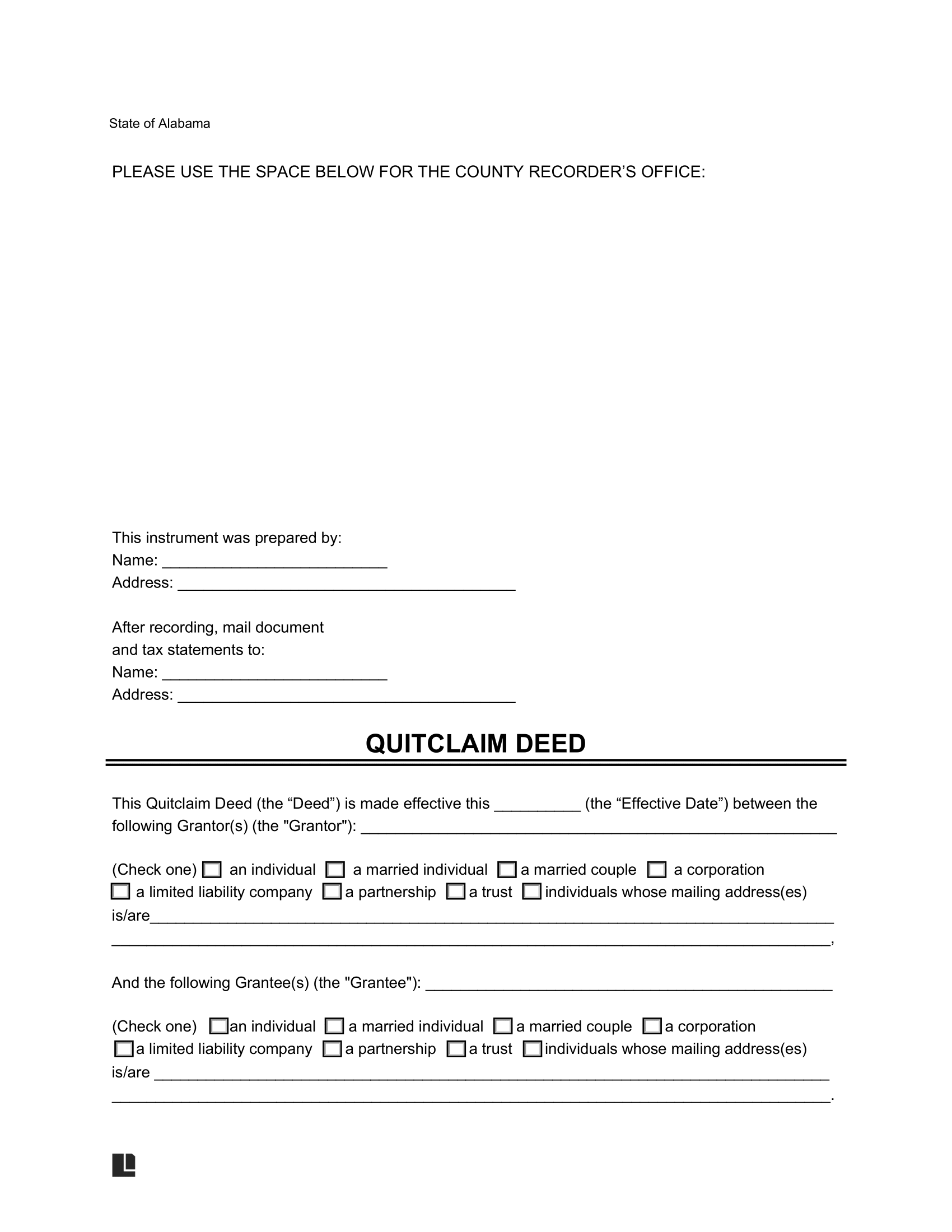Whether you’re transferring property to a spouse or family member, adjusting details on the title, or forfeiting ownership, accuracy and legal compliance are critical. Follow these steps to file a quitclaim deed in Alabama correctly.
Step 1: Secure a Copy of the Property Deed
Obtain the original deed to the property before you begin the quitclaim process. The deed contains critical information you need to file your quitclaim deed.
If you do not own the property, request a copy from the current owner or purchase one from your county’s Probate Court records department.
Step 2: Look for the Property’s Legal Description
Find the legal description of the property on the original deed. This description may include the address, parcel numbers, lots, or metes and bounds.
You will need this information to complete the quitclaim form.
Step 3: Determine the Recordation Taxes and Filing Fees
All property transfers are taxed per Ala. Code § 40-22-1 to § 40-22-12.
Review your state and local tax requirements to ensure your filing fees, taxes, and other financial obligations are covered.
Step 4: Complete the Quitclaim Form
Enter the required details, including the property’s legal description, grantor and grantee details, and tax information.
As state law requires, sign the document in the presence of at least one witness.
Step 5: File the Document With Your County Probate Court
Your quitclaim form must be filed with the probate court in the property’s county. You can look up the correct location through the Alabama Secretary of State website. Submit the signed and witnessed quitclaim form, real estate sales validation, and any taxes and fees.
Some counties have different formatting and documentation requirements, so check with your local probate office before you file.
